Process in which crustal rocks are distorted by compressional forces by being caused to bend upwards and downwards.
It occurs on fairly young sedimentary rocks.
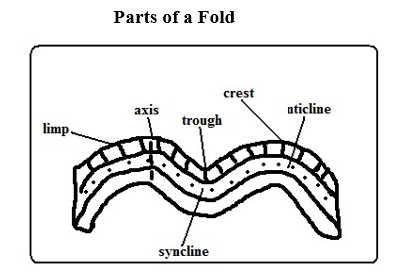
- Anticlines (upfolds)-parts of the earths surface which bend upwards when folding occurs.
- Synclines (down folds)-Parts of the earths surface which bend downwards when folding occurs.
- Crest-upper most part of Anticline.
- Trough-lowest part of a syncline
- Limp-rock layers sloping on both sides of a fold
- Axis-imaginary line drawn vertically through the centre of the anticline.
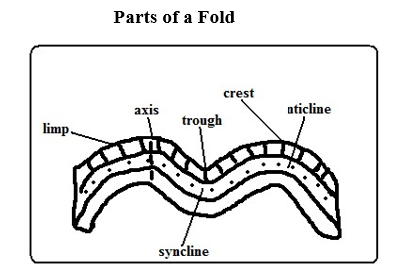
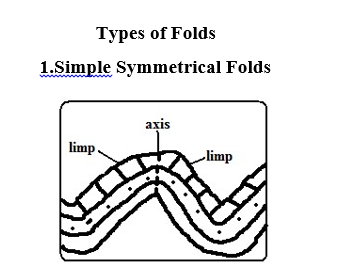
Which are symmetrical about the anticline.
Formed by 2 compressional forces of equal magnitude.
2.Asymmetrical Folds
Which are asymmetrical about the anticlines axis or in which one limp is steeper than the other.
Formed by two compressional forces of unequal magnitude in which one is stronger than the other.
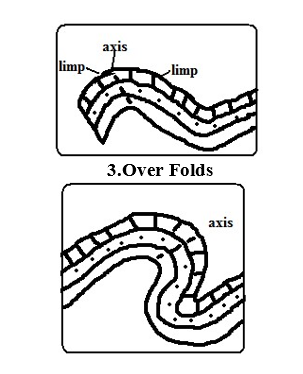
In which anticline of one fold is pushed over the limp of the other.
4.Isoclinal Folds

Which are packed closely together and with limps almost parallel to each other.
Vertical Isoclinal folds are formed by compressional forces of equal magnitude while inclined Isoclinal folds are formed by forces of unequal magnitude.
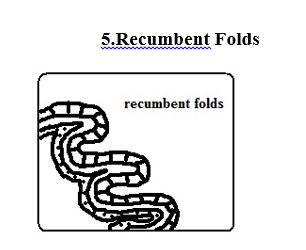
Which lie in a horizontal manner.
Formed by two compressional forces one of which is very strong.

In which one limp is pushed over the other limp.
The forces are very strong and they cause a fracture/fault to develop.
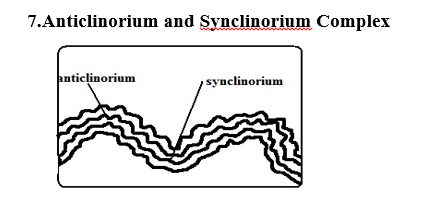
Folds characterised by minor upfolds and minor downfolds.
- Land is first subjected to weak compressional forces resulting into minor folds.
- Later the land is subjected to much greater compressional forces resulting into new upfolds with minor folds (Anticlinorium) and new down folds with minor folds (Synclinorium).
Resultant Features Due To Folding
1.Fold Mountains and Their Distribution
-Worlds highest and most impressive mountains and the most conspicuous feature of folding.
- Himalayas-Asia
- Rockies-W.N. America
- Everest-Nepal-Tibet border-
- Atlas-N.W. Africa. highest point.
- Appalachian-E.N. America
- Andes-Peru in S. America
- Alps-South Central Europe
Theories of Origin of Fold Mountains
1.Contraction Theory
During the earth’s formation surface rocks cooled faster and wrinkled to form Fold Mountains.
2.Convectional Currents Theory
- Horizontal convectional currents in the mantle exerted frictional pull on crustal rocks.
- Continental crusts were pulled towards each other.
- Sediments between them were squeezed into folds.
3.Continental Drift Theory
- During break of Gondwanaland India drifted northwards and collided with Eurasia.
- Sediments between were squeezed to form fold mountains e.g. Himalayas and Everest.
4.Plate Tectonics Theory
- When an oceanic plate meets another or it meets a continental plate the sediments under the sea are compressed to form Fold Mountains.
- When two continental plates meet the sial layer is compressed to form fold mountains
-E.g. Alps was formed when Africa plate pushed against the rigid European plate.
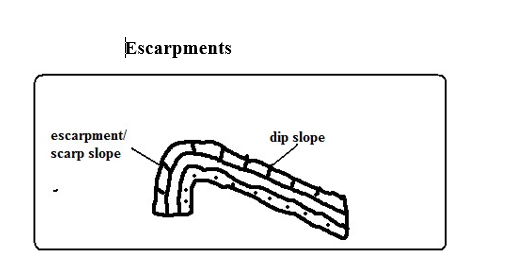
A relatively continuous line of steep slopes facing the same direction. Formed one compressional force causes folding resulting in one steep limp of the anticline which forms the escarpment.
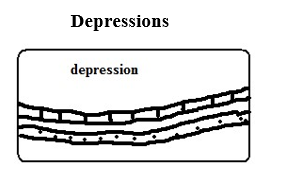
Formed when not very strong forces cause folding causing some parts of the earths surface to form synclines forming basins.
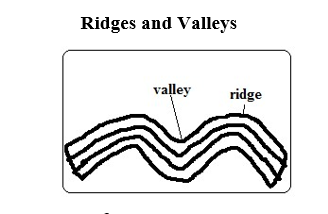
When folding occurs anticlines form uplands/ridges/hills while synclines form valleys.
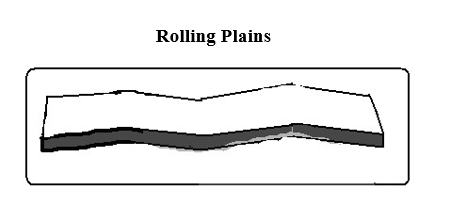
Plains which appear to rise and roll.
Formed when plains are acted upon by weak compressional forces resulting into gently sloping anticlines and very wide synclines.
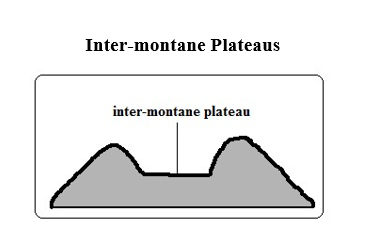
A high fairly level land between mountains.
Formed when rocks at the edges of a region become intensely folded and the middle parts resist folding resulting into mountains which enclose a high fairly level land.
7.Inter-montane basins
-Formed when some parts of inter-montane plateau sink more to form basins.
Significance of Folding
To Human Activities/Economic significance
Positive/advantages
- Fold Mountains are a tourist attraction which brings foreign exchange.
- Fold Mountains are water catchment areas and sources of rivers.
- Some fold mountains have valuable mineral deposits such as coal and petroleum.
- Fold Mountains act as protective barriers during war.
- Some fold mountains on the path of rain bearing rainfall influence rainfall causing the windward slopes to receive heavier rainfall.
- Folding can lead to formation of valuable minerals due to metamorphism.
- Folding brings valuable minerals to the surface making them easily available.
Negative/disadvantages
- Fold Mountains on the path of rain winds cause the leeward slopes to receive less rainfall.
- Fold Mountains discourage settlement due to cold temperatures and rugged terrain
- Folding can lead to burying of minerals.
- Fold Mountains are a barrier to road and railway where there are no passes and where there are passes they may be covered by snow.
Orographic fog hinders pilot’s visibility.
To Physical Environment
- Folding can result in submerged coastal zones which are used as harbours.
- Can lead to metamorphism of rocks changing their original state and making them more resistant to erosion.
- Depressions formed by folding turn into wet land important for water purification.
- Folding leads to faulting and magma may escape through faults leading to Vulcanicity and earth quakes.
